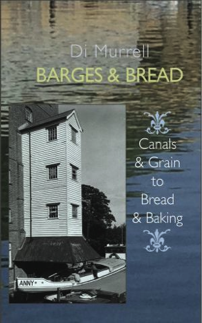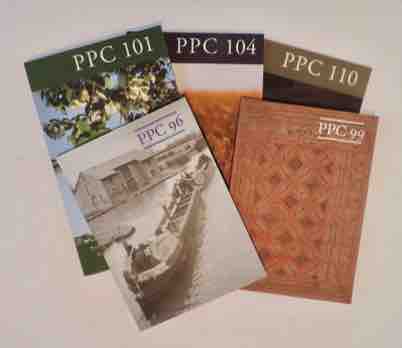A short stay in our Burgundy ‘hovel’ by son and partner turned, as ever, into a quick gallop round some of the various growers whose wines we hold in high esteem. They, son and partner, live on the island of Majorca which boasts a lively and innovative wine industry of its own. The traditional heavily oaked tannic reds and whites one associates with Spain are becoming less popular nowadays; modern Majorcian wines are more refined, though still lush and rich and filled with the heat of the Mediterranean. The wines of Burgundy are very different, lighter, but with, to my mind, greater complexity and, more to the point, not easily found on the island. Thus son’s swift visit is a good opportunity to taste, buy, and arrange for a small shipment to be sent on later.
T he vendange has just finished, the pickers barely departed, their long communal tables still scattered with debris from their final meal and there remains, as yet, much to do. Here in Burgundy grapes are picked by hand, carefully cut from the vine, where both skill and speed are essential attributes of the job. One can see the strain of fatigue around the vignerons’ eyes and feel, in the press of their handshakes, the knife nicked fingers, roughened palms, and calloused thumbs. These, the result of weeks of picking, fetching and carrying the panniers of grapes, and feeding them into the machines which crush and press out the lively juices.
he vendange has just finished, the pickers barely departed, their long communal tables still scattered with debris from their final meal and there remains, as yet, much to do. Here in Burgundy grapes are picked by hand, carefully cut from the vine, where both skill and speed are essential attributes of the job. One can see the strain of fatigue around the vignerons’ eyes and feel, in the press of their handshakes, the knife nicked fingers, roughened palms, and calloused thumbs. These, the result of weeks of picking, fetching and carrying the panniers of grapes, and feeding them into the machines which crush and press out the lively juices.
It is hugely lucky circumstance that the ‘hovel’ we purchased for next-to-nothing a few years ago is where it is. Our own waterbound past more or less demanded that any land base would be close to the environment we love and understand and thus a house in a village set at the junction of two navigable rivers exactly fitted our particular bill. These are the bottomlands. Our village is surrounded by water meadows which are flooded regularly when the mighty Saône swells with the snow melt from the Jura mountains and in its downward rush, overtops our little river Seille, pushing it backwards, until it too cascades over the towpath into the fields and leaves us marooned for a time in an inland sea. Our village is not ‘en route’ to anywhere else; if you fetch up here it is either because it’s where you live or you are lost. In the past it was quite isolated and something of a law unto itself; a low-lying secret sort of place where, even today, one can still be easily spooked by the misty wraiths that float across the fields. Once the home of fishermen and frog catchers, it attracts hordes of visitors for a short period during the summer who come to eat fresh fish caught in the river, frogs’ legs, and snails – the traditional dishes of this region.
The point is though, that in spite of living in a river flood plain, we are no more than twenty minutes drive from the vine covered hills of Burgundy and close to vineyards whose appellations are world renowned. For us the likes of Corton-Charlemagne, Montrachet, Pommard and Volnay are well beyond our particular pockets but there are many growers whose lands, by reason of some technicality, fall just outside the range of the greatest denominations but whose wines are both glorious and affordable.
 Today we decide to head south, away from the Côte d’Or and into the Mâconnais region, in search of simpler wines, wines that can be drunk quite young and which make good companions to light summer meals. Where shall we go? First to Viré Clessé to find Monsieur Morizet. Like many of the growers we now buy from, we first tasted his wine in a local restaurant. Then later, at the annual wine fair held in the village hall, we discover that his winery is just across the road. When we arrive it is necessary to go in search of someone, they are so busy. Nevertheless our insistence that we do not need a dégustation – just enough of their time to turn up a few cases of wine – is met with a shake of the head and an entreaty by Monsieur Morizet to follow him into the tasting room. Here we are seated at a table, glasses placed in front of us, bottles opened and we are soon working our way through several vintages as well as wine made from the oldest vines and the special cuvées from particular plots. Such hospitality is universal and repeated by each of the three growers we visit in the short time available.
Today we decide to head south, away from the Côte d’Or and into the Mâconnais region, in search of simpler wines, wines that can be drunk quite young and which make good companions to light summer meals. Where shall we go? First to Viré Clessé to find Monsieur Morizet. Like many of the growers we now buy from, we first tasted his wine in a local restaurant. Then later, at the annual wine fair held in the village hall, we discover that his winery is just across the road. When we arrive it is necessary to go in search of someone, they are so busy. Nevertheless our insistence that we do not need a dégustation – just enough of their time to turn up a few cases of wine – is met with a shake of the head and an entreaty by Monsieur Morizet to follow him into the tasting room. Here we are seated at a table, glasses placed in front of us, bottles opened and we are soon working our way through several vintages as well as wine made from the oldest vines and the special cuvées from particular plots. Such hospitality is universal and repeated by each of the three growers we visit in the short time available.
As we taste the wine Monsieur Morizet leaps up to serve a succession of visitors, all of whom he seems to know by name. Wine boxes are filled, while they wait, from the various vats which stand at the end of the room. We make our own choices and leave with two cases each of his delicious 2015 Cuvée des Étoiles and 3 bottles of his Crémant de Bourgogne.


After a pit-stop in Mâcon for a light lunch we are soon heading deeper into the Beaujolais hills. Much as I hate TomTom, here is the one place where it really proves to be worthwhile. The Beaujolais villages are not easy to find and even when we used to navigate between them using a large-scale ordinance survey map we would frequently get lost. The GPS knows the way. First we drive to St. Amour, the most northerly of the nine named Beaujolais Village appellations, and as always, straight to the homestead of the Duc family. They make the best wine in St. Amour and we are here for some bottles of their wonderful ‘Les Capitans’. Here too Laurent Duc insists that we come to the cellar and taste their wines while he surreptitiously tries to track his mother down on his phone; it is she who usually conducts the tastings. Cases of the ‘Les Capitans’ for special meals and the simpler St. Amour for everyday drinking are ordered. We think we have been quick until we realise that the bottles we are buying have still to be labelled and finished with their foil tops. Son goes into the store and helps Laurent to label and then pack the bottles. Eventually they are loaded into the car. As we leave he knocks on the window and when I lower it thrusts in a ‘cadeau’ he says – a bottle from their plot at Chénas.
 Our final destination, as it is now mid-afternoon, is a grower in the village of Chiroubles. We head a little deeper into the Beaujolais hills. The best wine to be had in this village is from Domaine Cheysson. The family have been making wine here for more than 150 years. The premises are much more imposing than those of most of the vignerons we call at, with a grand house and a walled garden and from the terrace, on a clear day, an extraordinary view of Mont Blanc, nigh on 250 kilometres away. We looked, we saw, we wondered, though Mme Cheysson did point out that when one could see the mountain this clearly it was a forewarning; there was bad weather to come.
Our final destination, as it is now mid-afternoon, is a grower in the village of Chiroubles. We head a little deeper into the Beaujolais hills. The best wine to be had in this village is from Domaine Cheysson. The family have been making wine here for more than 150 years. The premises are much more imposing than those of most of the vignerons we call at, with a grand house and a walled garden and from the terrace, on a clear day, an extraordinary view of Mont Blanc, nigh on 250 kilometres away. We looked, we saw, we wondered, though Mme Cheysson did point out that when one could see the mountain this clearly it was a forewarning; there was bad weather to come.
So what of the philosophical machinations mentioned in the title of this piece – you may be wondering? I forgot to say that while we were waiting for our wine to be labelled at the Ducs we were brought a glass of juice to try, made from the fresh pressed, newly harvested grapes. It was the colour of sherbet, cool, sweet and already touched with a slight yeastiness which signalled that fermentation had begun. Like the risen dough, the turning of the grape into wine is something magical – alchemy; primeval almost; signalling practices as old as time. Once one begins to consider the mysterious processes by which the fresh juice is transmuted into an aged wine it is but a short step to seeing the whole wine-making process as analogous to healthy human development: first, an innocence bursting with the freshness and vitality of youth, which, provided it is lovingly nurtured, eventually, over time, settles and achieves equilibrium: a balance which only maturity can bestow. In man it is called wisdom.
Pass the bottle, please!


0 Comments